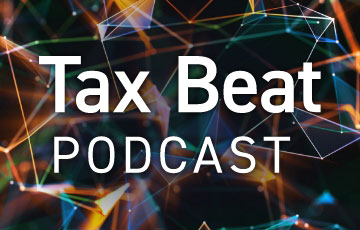The Employee Retention Credit (ERC) continues to provide a wide variety of employers with lucrative refundable payroll tax credits for qualified wages paid to employees in 2020 and 2021. Businesses can still apply for the ERC by filing an amended Form 941X (Quarterly Federal Payroll Tax Return) for the quarters during which the company was an Eligible Employer.
Important Alert
On September 14, 2023, the IRS released information on an immediate moratorium on the processing of new Employee Retention Credit (ERC) claims until at least 2024. This pause should not stop any employer from determining if it’s eligible to claim the ERC, documenting its qualifications, calculating the credit or filing an amended Form 940X to claim the appropriate credit. While new ERC claims will not be processed for the rest of 2023, they will be in line for processing when the IRS resumes its work in early 2024.
“We have helped hundreds of employers receive the ERC over the past two years since the credit was introduced. We have not seen a slowdown in application approvals by the IRS,” says Martin Karamon, principal at Cherry Bekaert who leads the Firm’s ERC Team.
“Even though employers can only assess their Eligible Employer status from March 13, 2020, through September 30, 2021, we are seeing record numbers of our clients being approved to receive the ERC,” Karamon adds. “Unfortunately, many companies still have not evaluated whether they qualify for the four separate credits.”
As we reach two years of ERC availability, Karamon and his team answer the most frequently asked questions about this payroll tax credit.
How Does the Employee Retention Credit Processing Moratorium Affect Potential Claims?
The IRS moratorium on processing ERC claims began on September 14, 2023. The IRS has not provided specific information on when the moratorium will end, but we expect that it may be lifted before the Summer of 2024. The IRS is still processing claims filed before the beginning of the moratorium, but at a slower rate than before.
The IRS is focusing attention on ERC claims that are based on the criteria for a business that experienced a partial suspension of operations caused by a COVID-19 government order limiting commerce, travel, or group meetings. The IRS has released a memorandum describing five situations which do not qualify the employer for ERC.
You can read more about why the IRS suspended ERC claims and how this may impact your business at cbh.com/ERC
How Does the Employee Retention Credit Work?
The ERC is a refundable payroll tax credit that can be as high as $21,000 per employee in 2021. The deadline for applying for the 2020 ERC has passed.
Who Qualifies for the Employee Retention Credit?
Employers that experienced partial shutdowns due to government orders limiting commerce, travel or group meetings; or that experienced significant declines in quarterly gross receipts (as compared to their quarterly gross receipts in 2019) due to the pandemic are eligible employers under this program.
What Are ERC Qualified Wages?
ERC credits are calculated based on the qualifying wages paid to employees during eligible employer status. For most companies taking advantage of this program, the refundable tax credits are well in excess of the payroll taxes paid by the employers. ERC benefits can be larger than the amounts a company received in PPP funding.
Are Benefits of the Employee Retention Credit the Same for Large and Small Employers?
Small employers receive enhanced benefits under the ERC regime. Specifically, for the time they are an Eligible Employer, they can include wages paid to all employees. Large employers can only include wages paid to employees for not providing services.
How Do I Calculate If an Employer Is a Large or Small Employer for the Employee Retention Credits?
- For the 2021 ERCs, an employer with 500 or fewer full-time employees (as measured in 2019) is defined as a small employer.
- The term “full-time employee” means an employee who, with respect to any calendar month in 2019, had an average of at least 30 hours of service per week or 130 hours of service in the month (130 hours of service in a month is treated as the monthly equivalent of at least 30 hours of service per week), as determined in accordance with section 4980H of the Code. An employer that operated its business for the entire 2019 calendar year determines the number of its full-time employees by taking the sum of the number of full-time employees in each calendar month in 2019 and dividing that number by 12. Special rules apply to those who were not in business all of 2019.
Is the Employee Retention Credit Only for Full-Time Employees?
No. An employer may include wages paid to part-time and full-time employees in the calculation of the ERC. The only limitation on the calculation of the credits is that an employer may only calculate the credits on the first $10,000 of wages and health plan costs paid to each employee during each credit-generating period.
What Is the ERC Eligibility / Credit-Generating Periods?
If eligible, employers can claim the ERC for qualified wages paid in Q1, Q2 and Q3 of 2021.
Can I Still Apply for the Employee Retention Credit?
Yes. The statute of limitations for the 2021 ERCs does not close until April 15, 2025. The 2020 ERC deadline for applying has passed.
What Is the Interplay Between Wages Included in the R&D Credit and Wages Utilized in the ERC Calculations?
- Wage expenses utilized in the ERC calculation cannot also be used in the R&D Credit calculation, but still need to be treated as QREs in future tax year base amounts.
- Wage expenses that qualify as both ERC-eligible Qualifying Wages and Qualified Research Expenses for R&D Credit purposes still need to be included as QREs in the base year calculations for future year R&D Credit calculations.
- Wages funded by PPP can be included in the R&D credit calculation.
Are Most Companies Utilizing the Gross Receipts Test or the Government Mandate Test to Reach Eligibility for ERC Purposes?
For the 2021 ERCs, most companies are qualifying as an eligible employer under the Gross Receipts Test.
What Is Considered Gross Receipts for ERC?
- For taxable entities:
- Total sales (net of returns and allowances) and all amounts received for services.
- Includes any income from investments:
- Dividends
- Interest
- Rents
- Royalties and annuities, regardless of whether those amounts are derived in the ordinary course of the taxpayer’s trade or business
- Reduced by the taxpayer’s adjusted basis in certain property used in a trade or business or capital assets sold.
- Tax accounting method for income recognition applies.
- For non-taxable entities:
- Gross Receipts means gross receipts of the taxable year and generally includes all receipts.
- Tax accounting method for income recognition applies.
- Includes proceeds from investments and grants.
- Not Reduced by the taxpayer’s adjusted basis in certain property used in a trade or business or capital assets sold.
If I Qualify Under the Government Mandate Test, Does That Automatically Qualify Me as an Eligible Employer for the Entire Quarter?
Technically, yes, but you only pay qualifying wages while the mandates are in effect and they are having a more than nominal impact on the business.
Do I Take the ERC into Income When I Receive It?
No. Instead, the employer must reduce deductions for wages on their income tax return for the tax year in which they are an eligible employer for ERC purposes.
Does the Employee Retention Credit Have to Be Paid Back?
No. The Employee Retention Credit is a fully refundable tax credit that eligible employers claim against certain employment taxes. It is not a loan and does not have to be paid back. For most taxpayers, the refundable credit is in excess of the payroll taxes paid in a credit-generating period.
How Do I Apply for the ERC?
Going forward, the only way to apply for the ERC is to file an amended Form 941X (Quarterly Federal Payroll Tax Return) for the quarters during which the company was an eligible employer.
How Long Does It Take for the IRS to Provide a Refund After Filing an Amended Form 941X?
Based on our experience, it is taking approximately nine months to receive a refund from the IRS after filing an amended Forms 941X.
Can I Get Both the ERC and PPP Loan?
Yes. While an employer may not include wages funded by a PPP loan in the ERC calculation, PPP funds only apply to eight to ten weeks of wage expenses. The ERC eligibility periods are longer. PPP loans can also fund non-wage expenses.
For ERC purposes, it is most important to develop work papers that allocate the PPP funding across the entire 24 week Covered Period.
PPP funding may be allocated to wages that would not generate any ERC (e.g., to owners of the company or to wages in excess of $10,000 in one of the four ERC credit-generating periods).
Do I Need to File for PPP Forgiveness Before I File for the ERC?
No, but, if possible, allocate the maximum available non-wage allowable costs to the PPP being forgiven.
Does PPP Forgiveness Count as Gross Receipts for ERC?
No. Based on safe harbor guidance released by the IRS in August 2021, it has been confirmed that PPP forgiveness does not create gross receipts in the amount of the forgiveness (this also applies to Shuttered Venue Grant proceeds and Restaurant Revitalization Funding).
Can Churches and Other Religious Organizations Qualify for ERC?
Yes. The Employee Retention Credit is available to churches and other religious organizations that were impacted by government-ordered capacity restrictions on gatherings or that experienced significant declines in gross receipts.
Do Companies Owned by Private Equity Funds Need to Aggregate Their Gross Receipts and Employee Counts Together When Determining Eligible Employer Status?
Generally, no. Brother-sister portfolio companies under the fund can likely be treated as separate trades or businesses when considering eligible employer status because the Fund owning the portfolio companies is not an active trade or business (rather a passive investment vehicle).
Who Qualifies for ERC?
A wide range of employers qualify for the ERC, including businesses in the following industries:
- Education
- Government Contractors
- Healthcare and Life Sciences
- Hospitality and Retail
- Industrial
- Not-For-Profit
- Professional Services
- Real Estate and Construction
- Technology
If I Use a PEO Instead of a Traditional Payroll Tax Provider, Can I Still Claim the ERC?
Yes. Employers using a PEO are still entitled to claim the Employee Retention Credit.
For more information about the Employee Retention Credit, visit Cherry Bekaert’s ERC Guidance Center or contact a Martin Karamon.
What Are Examples That Allow an Automotive Dealership to Qualify for the ERC Due to the Effects of COVID-19 Mandates Limiting Commerce, Travel, or Group Meetings?
See Examples Below:
- Mandates for showroom closures: Consider limitations on indoor capacity that impacted your ability to effectively perform sales and marketing
- Example A: A series of dealerships in Pennsylvania were required to limit indoor showroom capacity until halfway through 2021. The sales force significantly impacted – could not conduct normal operations
- Example B: A dealership in Maryland normally held regular outdoor marketing events that significantly boosted visibility and customer traffic. This dealership was unable to hold events due to limitations on gathering sizes.
- Limitations on travel caused by geographic lockdowns in 2020 and 2021:
- Example: A Dealership in on an island location was closed off from mainland. No visitors were allowed on the island from March – May 2020
- Supply chain disruptions due to mandates affecting shipping and manufacturing: This affects dealerships who source parts from entities partially suspended by government mandates.
- Example A: Port closures in China caused disruptions to the supply chain for periods in Q2 and Q3 2021. Dealerships who source cars and car parts out of these locations can be eligible for the period of time that the ports were shut down. Affected ports include Shanghai, Yantian, and Ningbo-Zhoushan.
- Example B: Mexican manufacturing centers were heavily affected by indoor capacity limitations affecting the supply chain for automobiles in 2020 and 2021.
Does the Receipt of Payroll Tax Refunds Under the ERC Trigger Title IX for Private Schools?
There is no guidance specific to independent schools indicating that the refund of payroll taxes under the ERC program will be considered federal financial assistance for purposes of requiring independent schools to comply with certain federal laws, such as Title IX of the Education Amendments Act of 1972.




